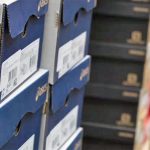Luxottica Group hosted a mid-period conference call with analysts last week to review its current status and give a peak into how it is progressing after its acquisition of Oakley, Inc., which closed in November 2007. On the whole, the company expects to meet earlier guidance of fiscal 2008 earnings per share of approximately $1.29 to $1.32 per share when measured at constant exchange rates.
Sales for the second quarter are expected to be flat with last year on a pro forma, constant currency basis. Wholesale revenues are expected to rise in the low-single-digits, while retail will decline 1% to 2% for Q2. On a reported basis, sales will grow mid-singles for the second quarter in currency-neutral terms with wholesale sales up approximately 25%, but retail down high-singles.
The company will incur approximately 25 million in one-time charges during the fiscal year as a result of the acquisition, with 11 million coming during the second quarter. Offsetting those charges will be a total of approximately 20 million in cost-savings synergies building throughout the year and culminating in 7 million savings in the Q4.
Currency exchange rates are having a particularly detrimental effect on the Luxottica business, with management estimating that earnings per share for the second quarter on a pro forma basis will grow in the mid-single-digits when measured in dollars, but will be down high-singles when measured in euros. Reported EPS will grow low-singles in dollars, but will be down high-singles in euros for the quarter.
Regionally, Andrea Guerra, Luxottica Group CEO, commented that “North America is now basically nine months having more or less similar trends, sun doing much better than optical, premium optical brands doing much better than licensed optical brands, and Oakley brand and Ray-Ban brand doing very well, and wholesale keeping up.”
Though wholesale was up in North America, the department store business was said to be soft.
Outside of North America, the rest of the world was doing well with the exception of Italy and Spain, which did poorly for the end of May and start of June. The rest of Europe was said to have “kept good pace.” Emerging markets continued to do very well.















